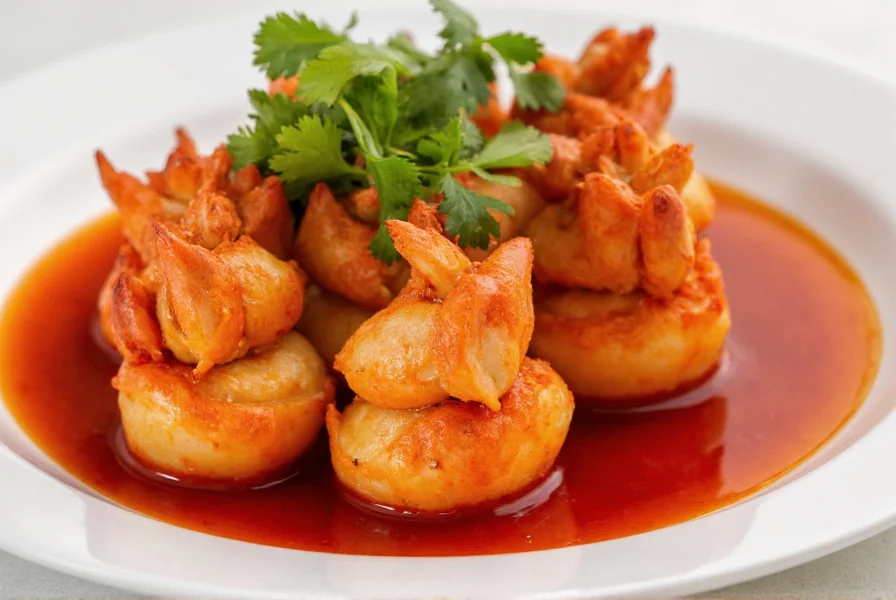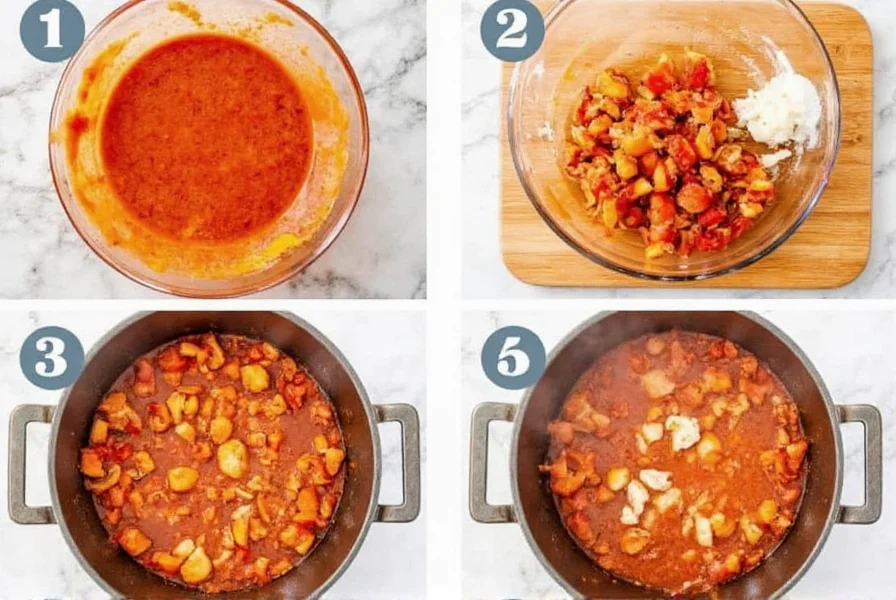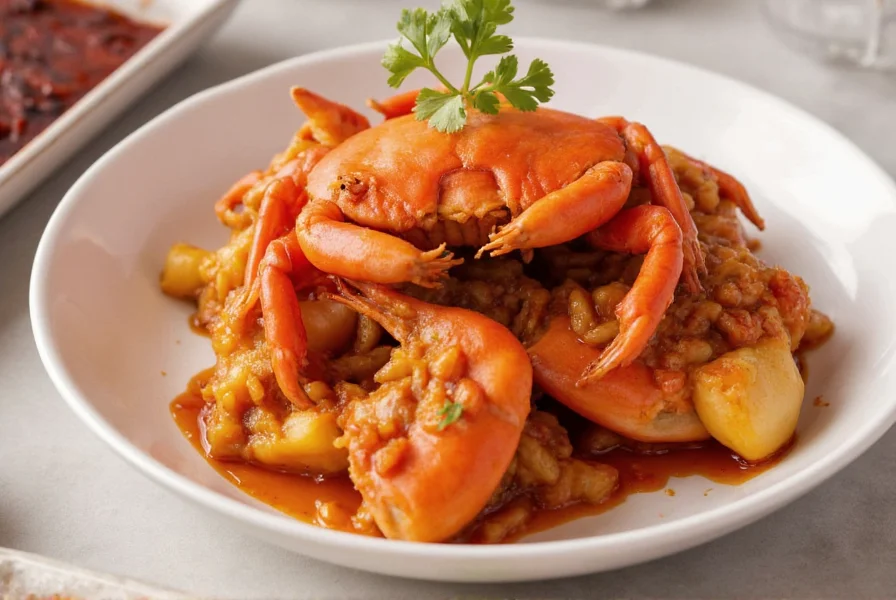Originating in Singapore's vibrant hawker centers, mini chili crab emerged as a creative solution to make the beloved national dish more approachable. Traditional chili crab typically features whole mud crabs weighing 1-1.5kg, requiring specialized cracking tools and creating a messy but enjoyable dining experience. The mini version addresses practical concerns while honoring culinary tradition, becoming particularly popular for cocktail events, family gatherings, and restaurant appetizer menus.
The Cultural Evolution of Mini Chili Crab
Singapore's chili crab dates back to the 1950s when chef Cher Yam Tian began experimenting with tomato-based sauces for seafood. The mini adaptation gained traction in the 2000s as chefs sought ways to introduce this national treasure to international diners unfamiliar with cracking whole crabs. Food establishments noticed customers often hesitated to order traditional chili crab due to its formidable presentation and perceived difficulty in eating.
Mini chili crab represents Singapore's innovative culinary spirit—adapting tradition without compromising authenticity. Hawker stalls and restaurants began offering claw-only versions or smaller crab varieties like flower crabs, which naturally come in more manageable sizes. This evolution demonstrates how Singaporean cuisine balances respect for heritage with practical considerations for contemporary diners.
Key Characteristics of Authentic Mini Chili Crab
What distinguishes genuine mini chili crab from imitations? Three essential elements define the authentic experience:
| Element | Traditional Chili Crab | Mini Chili Crab |
|---|---|---|
| Crab Selection | Whole mud crabs (1-1.5kg) | Crab claws or smaller varieties like flower crabs |
| Serving Style | Entree with mantou buns | Appetizer or sharing plate |
| Eating Experience | Requires cracking tools | Easier to handle with minimal tools |
| Sauce Ratio | Generous sauce coating | Slightly thicker sauce for better adherence |
The sauce remains the heart of mini chili crab, featuring the same carefully balanced ingredients as its larger counterpart: fresh red chilies, garlic, ginger, tomato puree, eggs for texture, and a touch of vinegar. Chefs often adjust the sauce consistency slightly thicker for mini versions to ensure proper adherence to smaller crab pieces.
Preparing Mini Chili Crab at Home
Creating authentic mini chili crab requires attention to specific techniques that differ slightly from traditional preparation. When making mini chili crab recipe variations at home, focus on these critical elements:
Start with fresh crab claws or smaller crab varieties. Flower crabs work exceptionally well for mini chili crab preparation due to their sweet meat and manageable size. Blanch the crab pieces briefly in boiling water before adding them to the sauce—this prevents overcooking while ensuring food safety. The mini format requires precise timing since smaller pieces cook faster than whole crabs.
The sauce preparation follows the same meticulous process as traditional chili crab. Many home cooks searching for how to make mini chili crab successfully discover that maintaining the proper sauce-to-crab ratio proves crucial. With smaller pieces, the sauce should coat thoroughly without drowning the delicate crab meat. Stir gently to avoid breaking the tender pieces while ensuring even coating.

Serving Traditions and Modern Interpretations
While traditional chili crab arrives with fried mantou buns for dipping, mini versions often feature creative presentation styles. Some establishments serve mini chili crab in individual cast-iron pots, while others present it as elegant amuse-bouches. The core mini chili crab ingredients remain consistent, but serving styles have evolved to match contemporary dining expectations.
For home preparation, consider these serving suggestions that honor Singaporean traditions while accommodating the mini format:
- Provide small crab crackers and picks alongside traditional mantou buns
- Serve in individual portions for easier management
- Offer lime wedges to cut through the rich sauce
- Pair with steamed jasmine rice to balance the intense flavors
Dietary adaptations have also emerged for mini chili crab sauce variations. Some chefs create gluten-free versions by substituting cornstarch for flour, while others develop less spicy iterations for those sensitive to heat. These modifications maintain the dish's essence while expanding its accessibility.
Common Challenges and Solutions
Preparing mini chili crab presents unique challenges compared to the traditional version. The smaller crab pieces require careful handling to prevent breakage during cooking. Many home cooks encounter issues with sauce consistency—too thin and it won't coat properly, too thick and it overwhelms the delicate crab.
For optimal mini chili crab preparation, follow these professional tips:
- Use room temperature crab pieces to prevent sauce temperature fluctuations
- Maintain medium-low heat when combining crab and sauce
- Add crab pieces last and cook just until heated through (2-3 minutes)
- Thicken sauce with a cornstarch slurry if needed, but err on the thinner side
- Garnish with fresh cilantro immediately before serving

Preserving Authenticity in Miniaturization
The success of mini chili crab lies in maintaining the complex flavor profile that makes Singapore's national dish so beloved. Authentic mini chili crab vs regular chili crab comparisons reveal identical seasoning balances—sweetness from tomatoes, heat from chilies, umami depth from the crab itself. The mini format shouldn't compromise on flavor intensity or complexity.
When evaluating mini chili crab recipes, look for these authenticity markers:
- Fresh chili peppers rather than chili sauce
- Proper balance of sweet, sour, and spicy elements
- Visible garlic and ginger pieces in the sauce
- Egg ribbons incorporated into the sauce
- Use of fresh crab rather than pre-cooked or frozen alternatives
Understanding these elements helps both home cooks and diners appreciate the craftsmanship behind quality mini chili crab preparation. The dish represents Singapore's culinary ingenuity—adapting tradition to contemporary needs without sacrificing authenticity.











 浙公网安备
33010002000092号
浙公网安备
33010002000092号 浙B2-20120091-4
浙B2-20120091-4